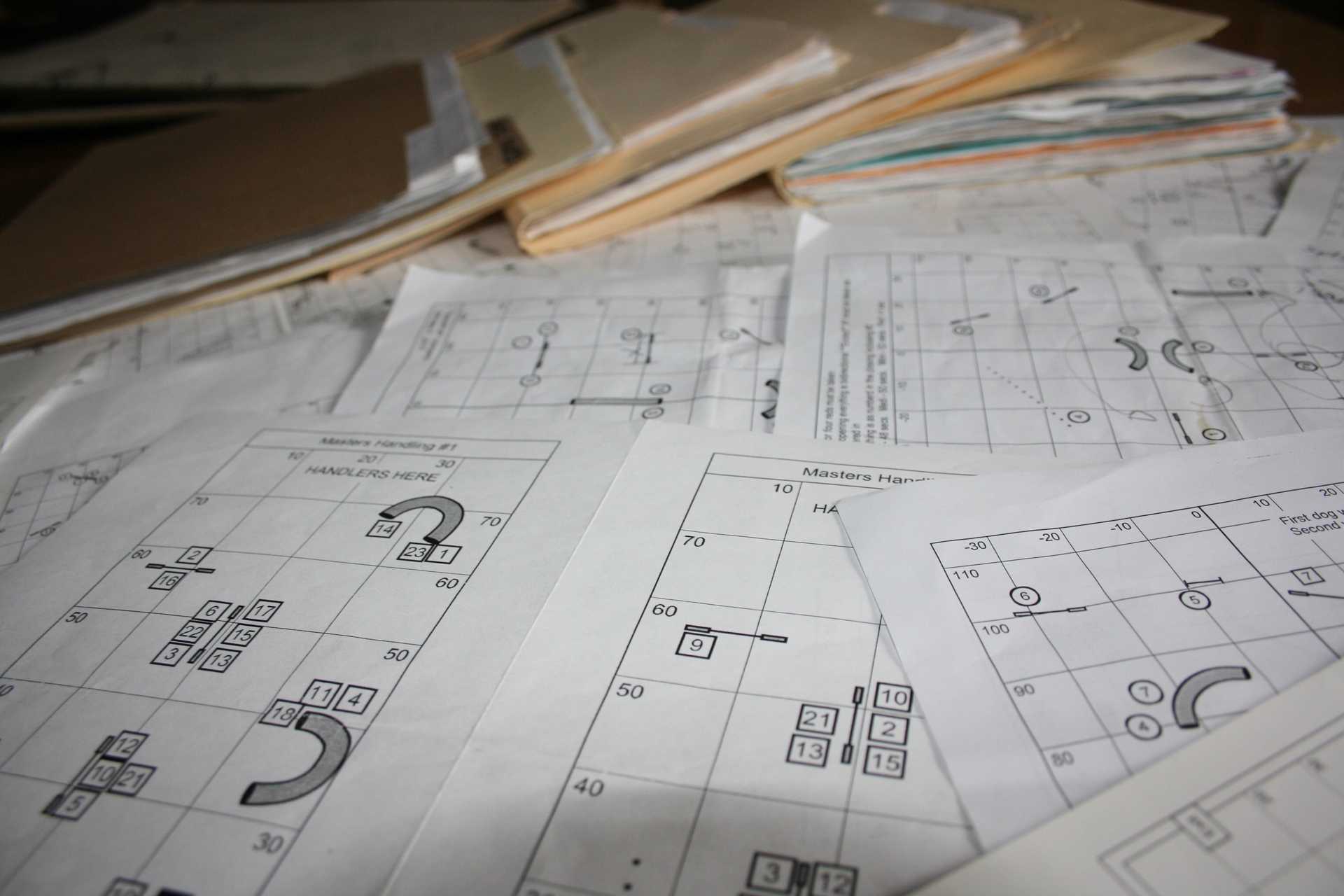Running Dearlove Intermediate Course of 4 Oct 2004
23 Oct 2004
This post updates my original thoughts. This course had a couple good handling challenges and offered some good instruction/training points for the intermediate handlers.
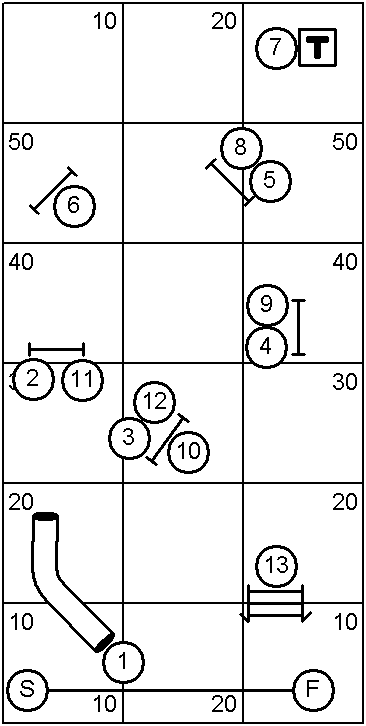
Most handlers lead out part way along the tunnel. Since these were intermediate teams there were some dogs that took the straight line to the handler instead of the tunnel. That made for some homework for those teams. The were only two reasonable approaches to the 2-3-4 sequence.
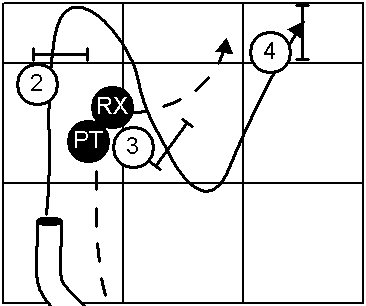
Above is a plan using a Post Turn Learning the Post TurnPost Turn/Shoulder Pull/Pivot Turn followed by a Rear Cross Learning the Rear CrossRear Cross. I didn’t think this would be too successful an approach, and I turned out to be correct. Most handlers didn’t get their dogs to change their Lead Leg before jump 2 so the dog went wide after the jump. The dog’s path after the jump then curves (widely) back towards the waiting handler. The handler then Rear Crosses Learning the Rear CrossRear Cross the dog. But the location of the handler after the Post Turn ends up being too close to jump 3 for the handler to easily change the dog’s lead before the jump. So again the dog lands and then changes their lead. Consequently, this handling plan ended up with wide, “loopy” turns. Neither the Post Turn nor the Rear Cross constrain the dog’s path.
Alternately, the diagram below shows the more successful plan using a Front Cross Learning the Front Cross - VideoFront Cross between jumps 2 and 3. This approach has the distinct benefit of tightening the dog’s turn around jump 2 and giving a tight line to jump 3. Also the handler’s location for the Front Cross almost guarantees the dog’s lead change before jump 3; also tightening the dog’s turn around jump 3. The most common handling error was to charge to the jump (not cueing a Short Stride) and then the dog sailed past the jump. But with the Front Cross the patient handler can get the dog back on the correct path and still get the tight turn around jump 3.
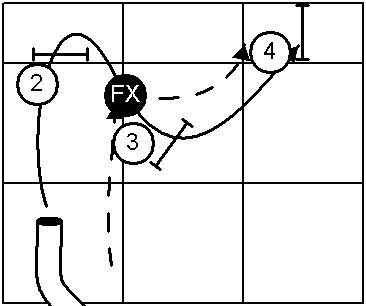
As I suspected, handlers that didn’t “support their dog’s line” between jumps 4 and 5 had their dogs turn in to them and go around jump 5. Since most handlers had to hang back to help the dogs over jump 5 the only handling for jump 6 was to Rear Cross before it.
I asked the handlers to Lead Out to the Handler Line Using the Handler Line - Front/Rear/Blind Cross LineHandler Line - Front/Rear/Blind Cross Line between jumps 8 and 9 and call the dog to their left hand and then pull the dog through the jumps on their left hand. Remember the handler’s location for the lead out is where they would put a Front Cross if running the course. Handlers without a good Lead Out kept their dogs on their right and Rear Crossed on the landing of jump 9 (sometimes called a Cross on the Flat or Bud Houston would call this a Tandem Turn). These approaches are shown below:
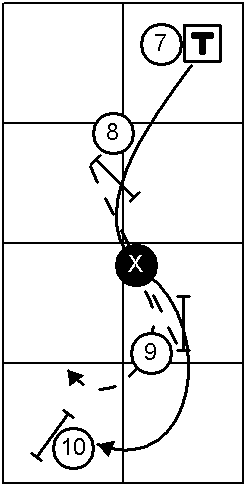
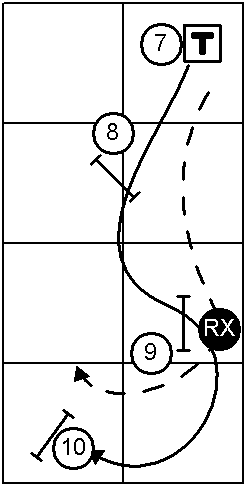
I had presupposed that handlers would Front Cross over jump 11 and then just run with the dog on their right through the finish. The intermediate handlers just aren’t as aggressive as I am. Then tended to not be far enough ahead of their dogs. So for these handler they used a Post Turn around jump 11 and ended up with their dogs on their left hand. This approach had the benefit that their dogs would turn towards the handler after jump 12 making a natural turn toward the final jump.
By breaking this course down into each interesting section I was able to use it effectively for teams just out of beginners classes and they did a great job putting it all together.
For another course using the same equipment setup please see this article.
If you enjoyed this article won't you please:  Thanks!
Thanks!
Related Tags
Related Articles:
- Running Dearlove Agility Intermediate Course of 29 Aug 2004
- Running Dearlove Intermediate Course of 16 Aug 2004
- Running Dearlove Intermediate Course of 20 Sep 2004
- Running Dearlove Advanced Course of 16 Aug 2004
- Dearlove Intermediate Course - Front vs. Rear Crosses
- Dearlove Nested Class Course - Sep 28 and Oct 5 2006
